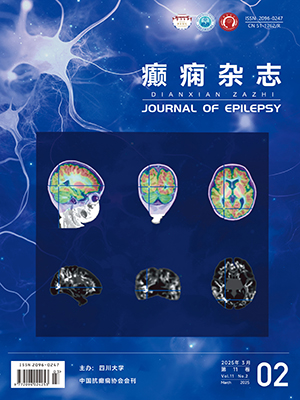| 1. |
Guenot M, Isnard J, Sindou M. Surgical anatomy of the insula. Adv Tech Stand Neurosurg, 2004, 29(5):265-288.
|
| 2. |
梁鹏, 刘恩重, 赵世光, 等.手术全切岛叶基底节区胶质瘤21例报告.中国微侵袭神经外科杂志, 2004, 9(4):157-159.
|
| 3. |
Tanriover N, Rhoton AL Jr, Kawashima M, et al. Microsurgical anatomy of the insula and the sylvian fissure. J Neurosurg, 2004, 100(5):891-992.
|
| 4. |
Isnard J, Guenot M, Sindou M. et al. Clinical manifestations ofinsular lobe seizures:a stereo-electroencephalographic study. Epilepsia, 2004, 45(9):1079-1090.
|
| 5. |
VonLehe M, Wellmer J, Urbach H, et al. Insular lesion ectomy for refractory epilepsy:management and outcome. Brain, 2009, 132(4):1048-1056.
|
| 6. |
Friedman DP, Murray EA, ONeill JB, et al. Cortical connections of the somatosensory fields of the lateral sulcus of macaques:evidence for acorticolimbic pathway for touch. J Comp Neur, 1986, 252(3):323-347.
|
| 7. |
Chikama M, Mcfarland NR, Amaral DG, et al. Insular cortical projections to functional regions of the striatum correlate with cortical cytoarchitectoifie organization in the primate. J Neurosci, 1997, 17(24):9686-9705.
|
| 8. |
Kurth F, Zilles K, Fox PT, et al. A link between the systems:functional differentiation and integration within the human insula revealed by meta-analysis. Brain StructFunct, 2010, 214 (5/6):519-534.
|
| 9. |
Stephani C, Fernandez-Baca Vaca G, Maciunas R, et al. Functional neuroanatomy of the insular lobe. Brain Struct Funct, 2011, 216(2):137-149.
|
| 10. |
Craig AD. The sentient self. Brain StructFunct, 2010, 214(5/6):563-577.
|
| 11. |
Augustine JR. Circuitry and functional aspects of the insularlobe in primates including humans. Brain Res Brain Res Rev, 1996, 22(3):229-244.
|
| 12. |
Carota A, Annoni JM, Marangolo P. Repeating through the insula:evidence from two consecutive strokes. Neuroreport, 2007, 18(13):1367-1370.
|
| 13. |
Nestor PJ, Graham NL, Fryer TD, et al. Progressive non-fluent aphasia is associated with hypo metabolism centred on the left anterior insula. Brain, 2003, 126(Pt 11):2406-2418.
|
| 14. |
Price CJ. The anatomy of language:contributions from functional neuro imaging. J Anat, 2000, 197(Pt 3):335-359.
|
| 15. |
伊慧明, 周媛, 张权, 等.岛叶的任务态和静息态功能磁共振成像.中国医学影像技术, 2010, 26(3):439-443.
|
| 16. |
Small DM, Prescott J. Odor/taste integration and the perception of flavor. Exp Brain Res, 2005, 166(3-4):345-357.
|
| 17. |
Coria F, Bahillo Marcos E, Moral Blanco M, et al. Late-onset isolated gelastic epilepsy secondary to entrapment of the right temporal horn. Neurologia, 2000, 15(5):204-207.
|
| 18. |
Garcia A, Gutierrez MA, Barrasa J, et al. Cryptogenic gelastic epilepsy of frontal lobe origin:a paediatric case report. Seizure, 2000, 9 (4):297-300.
|
| 19. |
孙涛.岛叶癫痫.中华神经外科杂志, 2014, 30(10):976-978.
|




